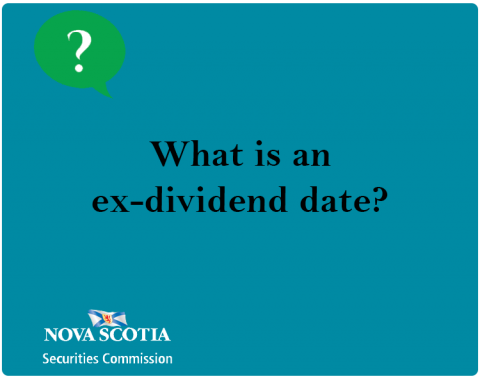Submitted by nsscadmin on

If you invest in stocks that pay a dividend it is important to know about the ex-dividend date.
The ex-dividend date is the date when an investor is not eligible to receive a company’s dividend.. To receive a company’s dividend payment you must own the shares one business day before the ex-dividend date.
For dividend investors there are four dates that are important to know. They include the declaration date, ex-dividend date, record date, and the payment date.
On the declaration date a company that pays dividends to its shareholders will declare how much their next dividend payment will be, when it will be paid and the ex-dividend date. As we previously said, to receive this dividend payment a shareholder must own the stock one business day before the ex-dividend date.
The record date is the date set by the company during which they will determine the stockholders on record that will receive the upcoming dividend payment. This date is typically the day after the ex-dividend date.
On the payment date anyone that is eligible to receive the dividend payment will be paid.
Let’s look at an example using a Canadian stock that pays a dividend – Canadian National Rail (CN Rail).
On October 19, 2021 (declaration date) CN Rail declared that they would make a fourth quarter dividend payment of $0.615 per share to shareholders on December 30, 2021 (payment date). They also declared the ex-dividend date of December 8, 2021 and a record date of December 9, 2021. In this example anyone that owned CN Rail shares that were purchased before December 8 would receive a dividend payment of $0.615 per share on December 30. If someone were to purchase CN Rail shares on December 8, or after December 8, they would not receive this dividend payment. This payment would go to whoever these shares were purchased from as they were the owner of the shares prior to the ex-dividend date.
